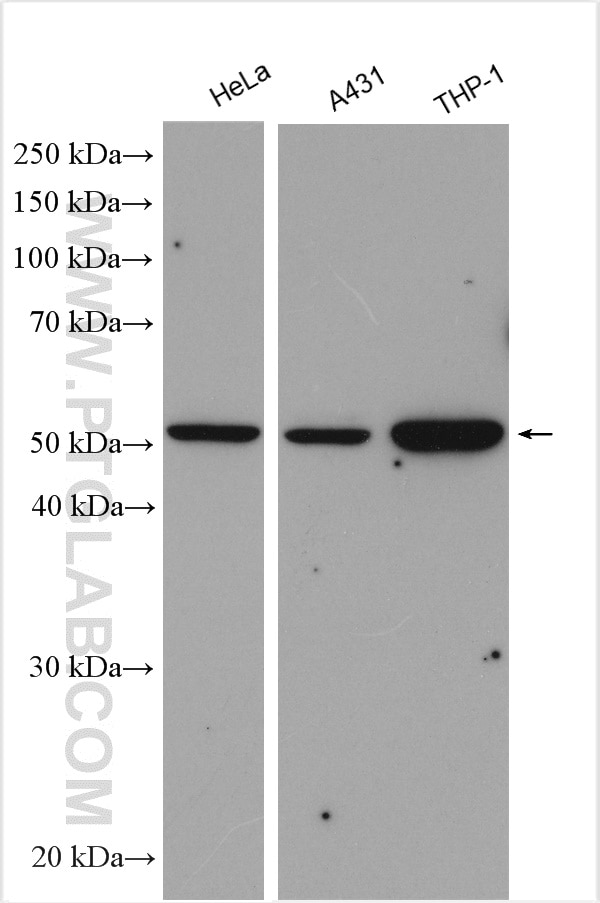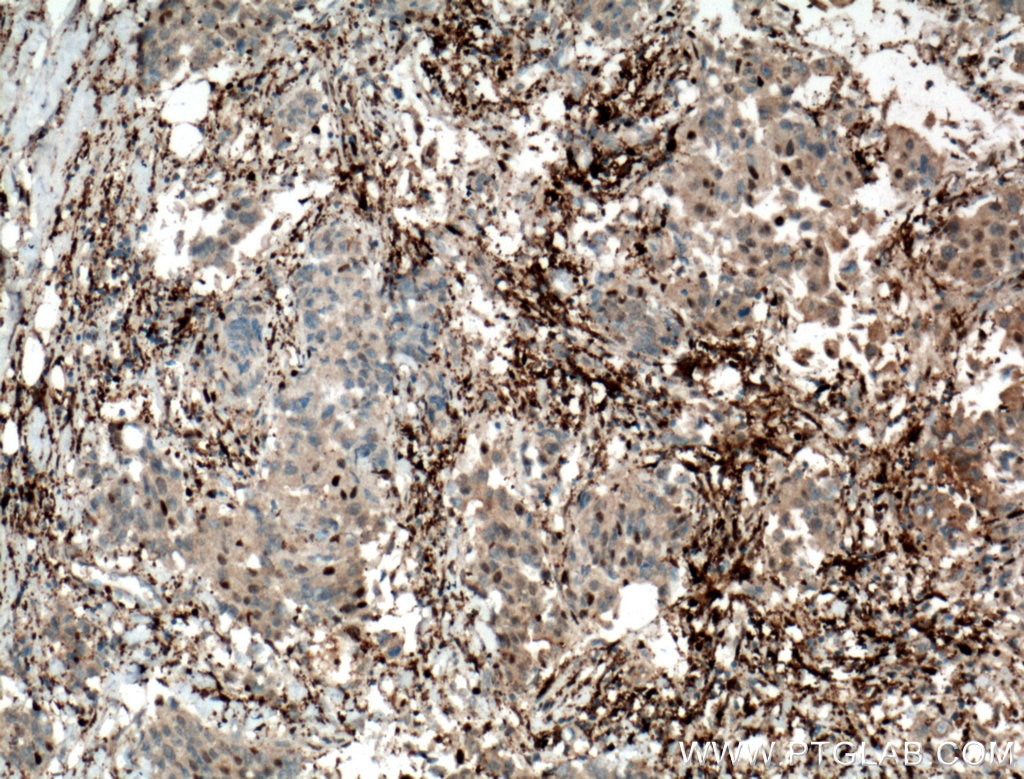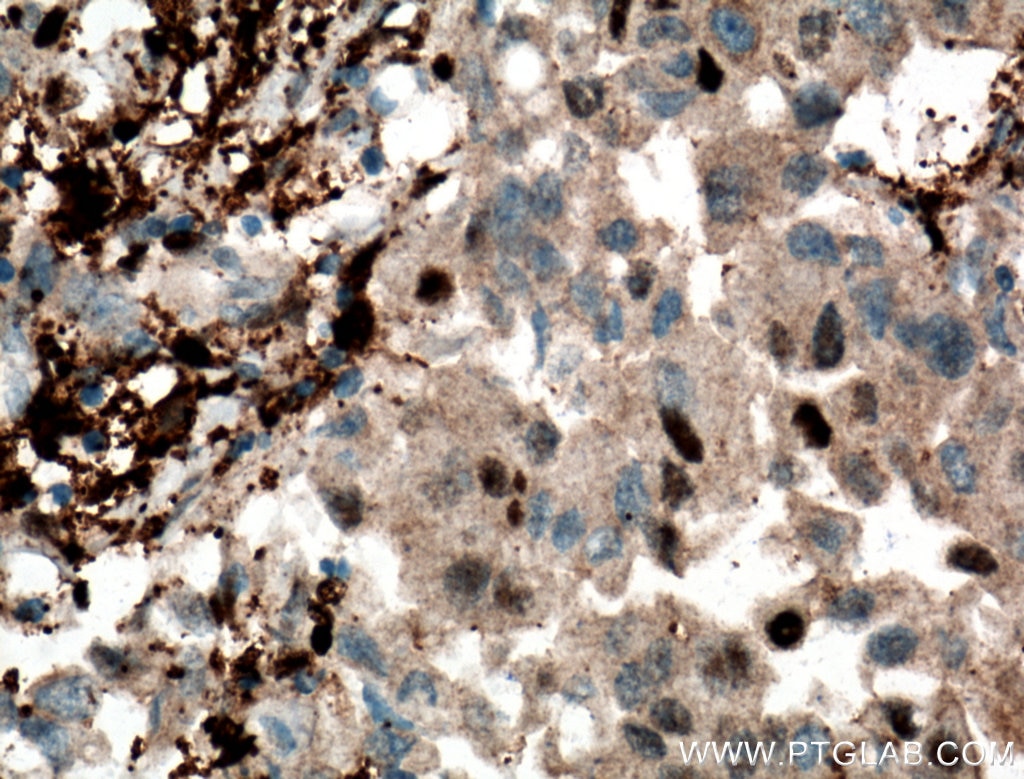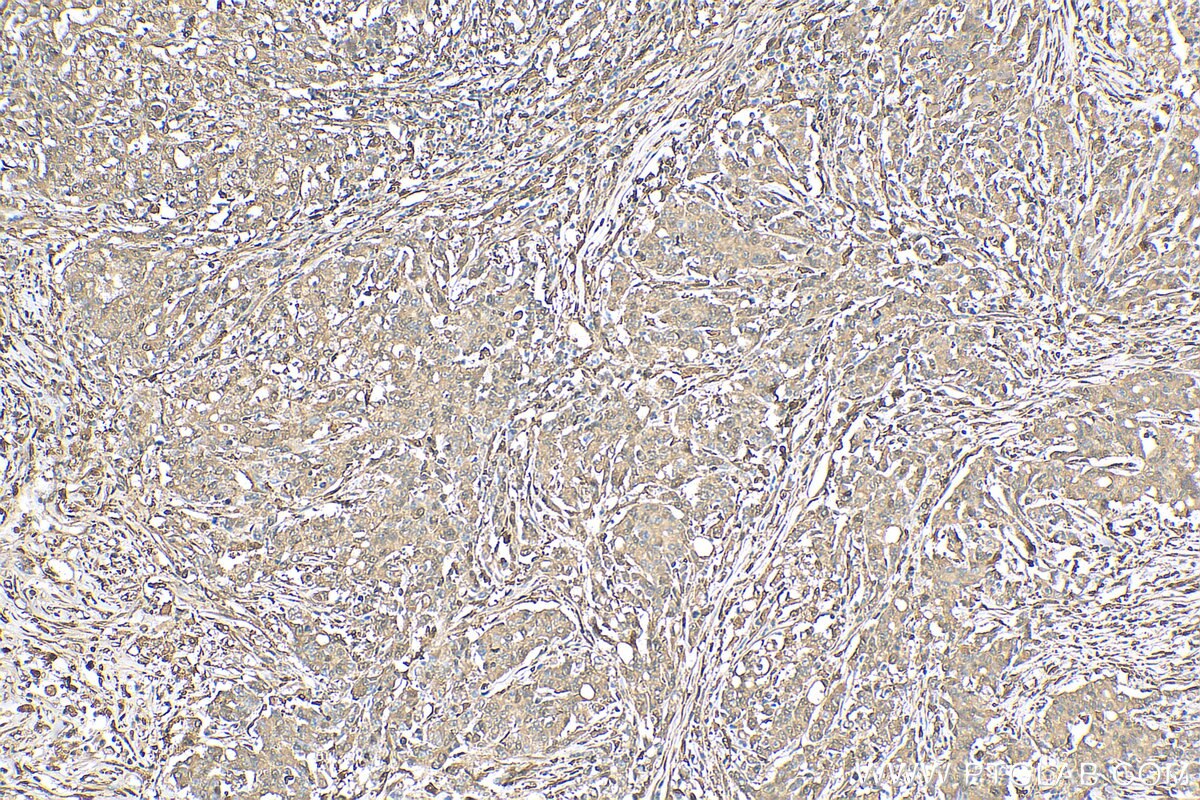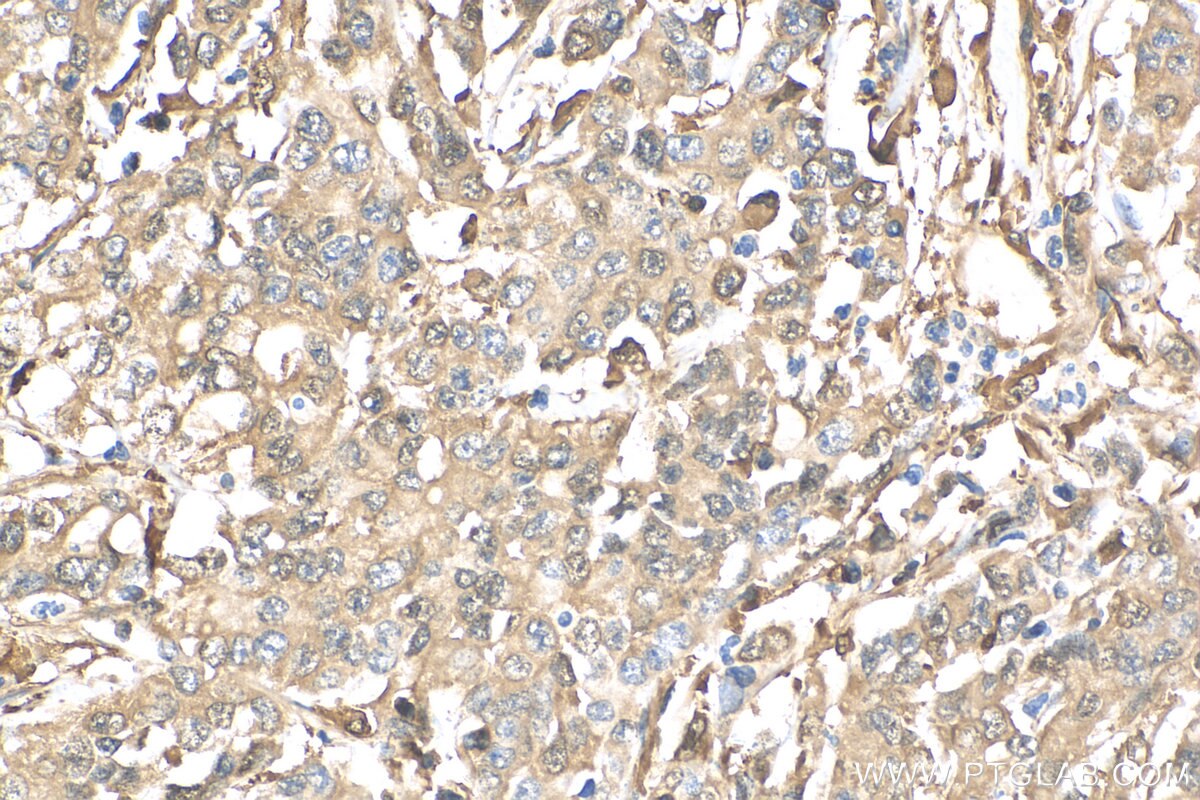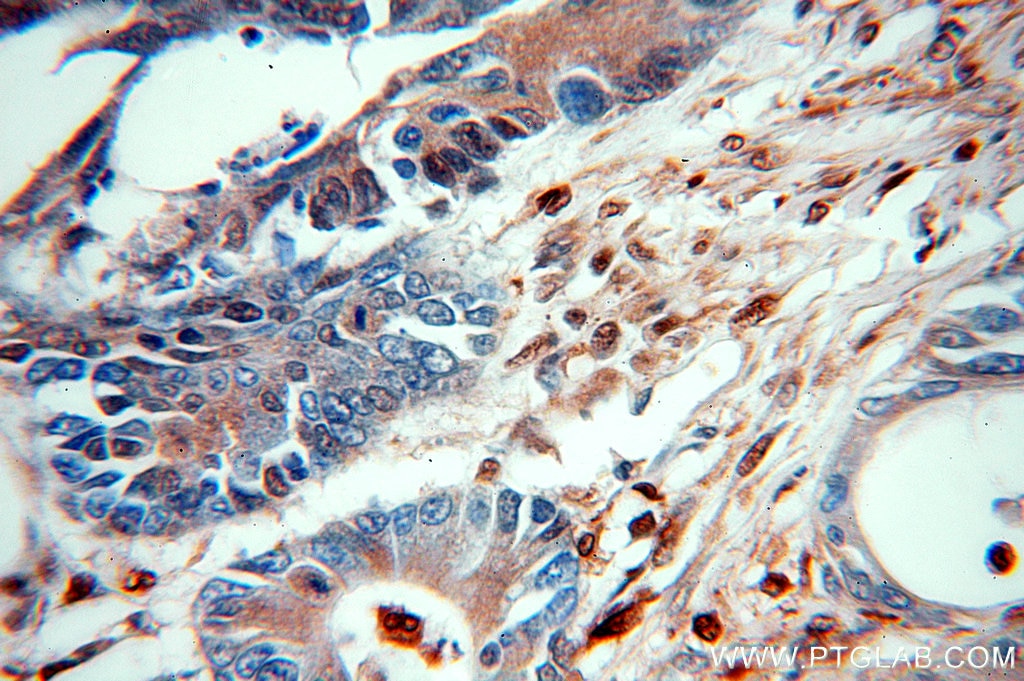PD-ECGF Polyklonaler Antikörper
PD-ECGF Polyklonal Antikörper für WB, IHC, ELISA
Wirt / Isotyp
Kaninchen / IgG
Getestete Reaktivität
human und mehr (1)
Anwendung
WB, IF, FC, IHC, ELISA
Konjugation
Unkonjugiert
Kat-Nr. : 12383-1-AP
Synonyme
Galerie der Validierungsdaten
Geprüfte Anwendungen
| Erfolgreiche Detektion in WB | A431-Zellen, HeLa-Zellen, THP-1-Zellen |
| Erfolgreiche Detektion in IHC | humanes Mammakarzinomgewebe, humanes Magenkrebsgewebe, humanes Ovarialkarzinomgewebe Hinweis: Antigendemaskierung mit TE-Puffer pH 9,0 empfohlen. (*) Wahlweise kann die Antigendemaskierung auch mit Citratpuffer pH 6,0 erfolgen. |
Empfohlene Verdünnung
| Anwendung | Verdünnung |
|---|---|
| Western Blot (WB) | WB : 1:500-1:2000 |
| Immunhistochemie (IHC) | IHC : 1:50-1:500 |
| It is recommended that this reagent should be titrated in each testing system to obtain optimal results. | |
| Sample-dependent, check data in validation data gallery | |
Veröffentlichte Anwendungen
| WB | See 4 publications below |
| IHC | See 1 publications below |
| IF | See 1 publications below |
| FC | See 1 publications below |
Produktinformation
12383-1-AP bindet in WB, IF, FC, IHC, ELISA PD-ECGF und zeigt Reaktivität mit human
| Getestete Reaktivität | human |
| In Publikationen genannte Reaktivität | human, Maus |
| Wirt / Isotyp | Kaninchen / IgG |
| Klonalität | Polyklonal |
| Typ | Antikörper |
| Immunogen | PD-ECGF fusion protein Ag3052 |
| Vollständiger Name | thymidine phosphorylase |
| Berechnetes Molekulargewicht | 482 aa, 50 kDa |
| Beobachtetes Molekulargewicht | 50 kDa |
| GenBank-Zugangsnummer | BC018160 |
| Gene symbol | Thymidine phosphorylase |
| Gene ID (NCBI) | 1890 |
| Konjugation | Unkonjugiert |
| Form | Liquid |
| Reinigungsmethode | Antigen-Affinitätsreinigung |
| Lagerungspuffer | PBS mit 0.02% Natriumazid und 50% Glycerin pH 7.3. |
| Lagerungsbedingungen | Bei -20°C lagern. Nach dem Versand ein Jahr lang stabil Aliquotieren ist bei -20oC Lagerung nicht notwendig. 20ul Größen enthalten 0,1% BSA. |
Hintergrundinformationen
Platelet derived endothelial cell growth factor (PD-ECGF), also known as thymidine phosphorylase (TP), induces migration and angiogenesis in endothelial and tumor cells, and was upregulated in various malignancies compared to that in normal tissues. Interestingly, PD-ECGF has dual effect on tumor development and chemotherapy. It could stimulate cancer cell migration and proliferation. On the other hand, some chemotherapeutic agents (5-fluorouracil, capecitabine, etc.) were converted to their active forms through TP enzymes.
Protokolle
| Produktspezifische Protokolle | |
|---|---|
| WB protocol for PD-ECGF antibody 12383-1-AP | Protokoll herunterladen |
| IHC protocol for PD-ECGF antibody 12383-1-AP | Protokoll herunterladen |
| Standard-Protokolle | |
|---|---|
| Klicken Sie hier, um unsere Standardprotokolle anzuzeigen |
Publikationen
| Species | Application | Title |
|---|---|---|
Oncogene The proteomic characterization of the peritumor microenvironment in human hepatocellular carcinoma. | ||
Acta Pharmacol Sin Exploring the protective effects of schizandrol A in acute myocardial ischemia mice by comprehensive metabolomics profiling integrated with molecular mechanism studies. | ||
J Ovarian Res 4-Methylumbelliferone inhibits ovarian cancer growth by suppressing thymidine phosphorylase expression. | ||
Mol Imaging Biol Evaluation of [(18)F]Fluorothymidine as a Biomarker for Early Therapy Response in a Mouse Model of Colorectal Cancer. | ||
Antioxidants (Basel) D-Penicillamine Reveals the Amelioration of Seizure-Induced Neuronal Injury via Inhibiting Aqp11-Dependent Ferroptosis |
